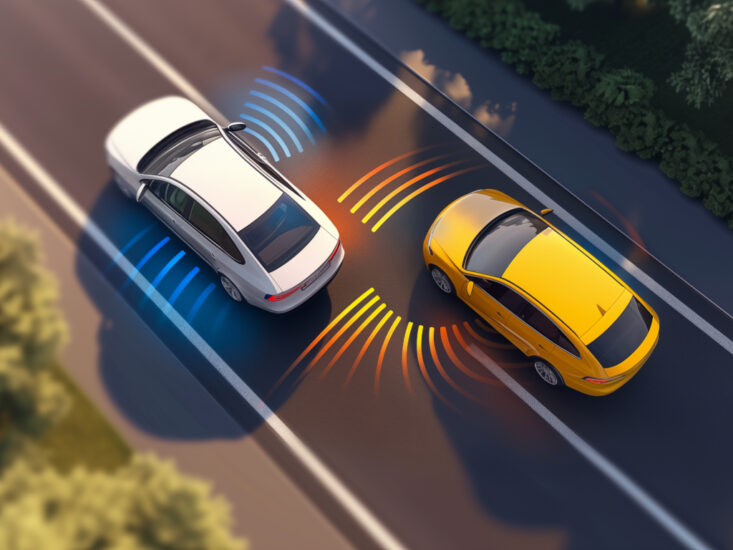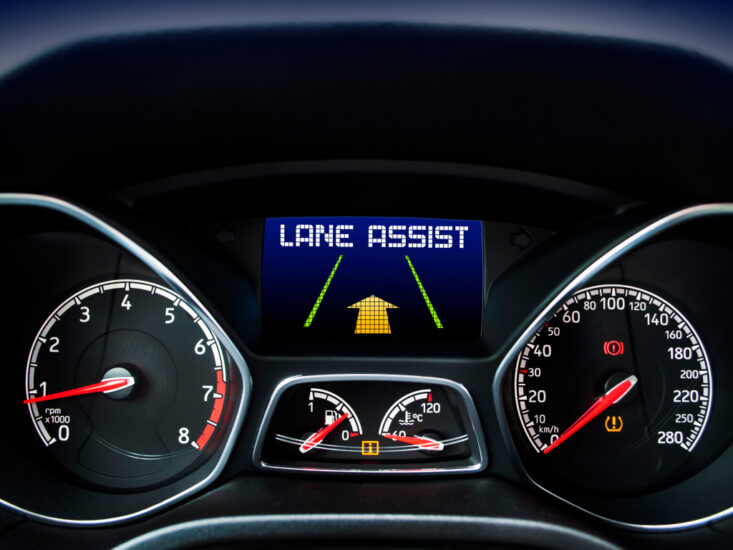Everything You Need To Know About Driver Assistance Systems
Advanced Driver Assistance Systems (ADAS) have become standard in the automotive industry, making driving much safer and easier. However, keeping up with new vehicle terms and features can be a bit overwhelming for many. While these new features are beneficial, we have to understand how they work to use them properly. Below, we provide simplified definitions of commonly used ADAS terms, some of which have become standard in most new vehicles in 2024.
- Adaptive Cruise Control (ACC)

Adaptive Cruise Control (ACC) maintains a preset speed while adjusting based on the distance from the vehicle ahead, enhancing safety by reacting faster to changing traffic conditions. It automatically slows and accelerates using radar and sensors to maintain a safe following distance.
- Active Park Assist

Active Park Assist helps drivers with parallel and perpendicular parking by automatically steering the vehicle into a parking spot. In early systems, the driver controls braking, acceleration, and gear changes while the system handles the steering. Nowadays, the system even changes the braking, acceleration, and gear changes. It uses sensors to detect suitable parking spaces and guides the car precisely.
- Anti-lock Braking (ABS)

Anti-lock braking system (ABS) restores traction to the tyres by regulating the brake pressure when the vehicle skid, a standard feature in almost all new cars. In the UAE, it is by law all new cars sold here must have it.
- Automated Emergency Braking

Automated Emergency Brakes (AEB) detect potential collisions with vehicles or pedestrians and automatically apply the brakes if the driver fails to respond. This system reacts within time to significantly reduce the severity of collisions or prevent them entirely.
- Automatic High Beams

Automatic High Beams switch between high and low beams based on surrounding traffic and lighting conditions. The system uses sensors to detect oncoming vehicles or vehicles ahead. It then adjusts the headlights to prevent blinding other drivers while maximising visibility for the driver.
- Blind Spot Monitor

A Blind Spot Monitor uses sensors to detect vehicles in adjacent lanes that may not be visible to the driver. It alerts the driver with visual or audible signals, reducing the risk of collisions during lane changes. Most cars with this feature have warning lights in the exterior mirrors that illuminate or flash when a vehicle is detected close by and one lane over; some vehicles also beep if the turn signal is activated while a car is in the adjacent lane.
- Driver Attention Monitor

Driver Attention Monitor tracks the driver’s behaviour and detects signs of drowsiness or distraction. It analyses steering input, eye movements, and other factors to check the driver’s attention. It sends warnings to alert the driver to take a break or refocus on the road.
- Forward Collision Warning

Forward Collision Warning (FCW) alerts the driver when a potential collision is ahead. Using cameras and sensors, it provides visual or audible warnings, allowing the driver to take corrective action. It works alongside other safety features like Automated Emergency Braking.
- Hill Start Assist

Hill Start Assist prevents rollback on an incline by holding the brakes as the driver switches from the brake pedal to the accelerator pedal. The feature is activated as soon as sensors detect that the car is halted on an incline. All the driver needs to do is press the brake with the same pressure as usual and press accelerate while the car holds still.
- Lane Departure Warning

Lane Departure Warning (LDW) detects unintentional drifting out of a lane without signalling. The system issues a visual or audible warning to prompt the driver to correct the course and helps prevent accidents caused by distraction or drowsiness.
- Lane Keeping Assist

Lane Keeping Assist (LKA) takes Lane Departure Warning a step further by gently steering the vehicle back into the lane, actively keeping it centred when it detects unintentional drifting.
- Night Vision

Night Vision uses infrared cameras to detect objects beyond the range of headlights in low-light conditions. It highlights pedestrians, animals, and other potential hazards on the road ahead, displaying them on the dashboard to improve nighttime driving safety.
- Parking Sensors

Parking Sensors, a feature found in most new cars, use ultrasonic or radar technology to detect objects around the vehicle during parking. They provide audible or visual alerts to help drivers avoid obstacles and ensure safer, more accurate parking, especially in tight spaces.
- Pedestrian Detection

Pedestrian Detection systems are exactly as the name describes, wherein they detect people crossing or walking nearby using cameras and sensors. When a pedestrian is detected in the vehicle’s path, the system warns the driver or automatically applies the brakes to avoid or mitigate collisions.
- Rear Cross-Traffic Alert

Rear Cross-Traffic Alert helps the driver reverse out of parking spaces by detecting approaching vehicles. It uses sensors to monitor the area behind the car, issuing warnings or even applying brakes if the system feels a collision is imminent.
- Semi-Autonomous Driving Mode

Semi-Autonomous Driving Mode makes driving a breeze as it allows the vehicle to control certain aspects of driving, such as steering, acceleration, and braking. It requires the driver to remain engaged but reduces the workload, especially on highways, offering increased comfort and safety. Latest systems even have lane-centering assist, which keeps the vehicle in the middle of the lane.
- Traction Control System

Traction Control System (TCS) prevents loss of traction on sharp turns and curves to prevent vehicle turnover. This works in the same way as ABS deployed through TCS to control when one tyre spins faster than the others.
- Tyre Pressure Monitoring
Tyre Pressure Monitoring systems help determine when the tyre pressure is outside the normal inflation pressure range. It notifies the driver through an icon on the driver cluster or an alert on the digital driver cluster display. This system is standard in all cars sold in the UAE.



There are no comments. Be the first!